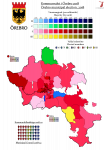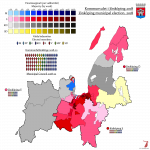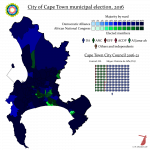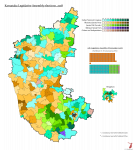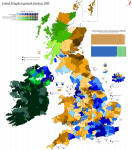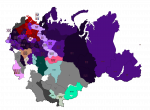
The Weimar map is back, folks. Those of you who remember the last one and/or know the Weimar electoral system by heart (hi
@OwenM) can skip the writeup, but as a refresher for the rest of you:
- The country is divided into constituencies and groups of constituencies. For the most part, the constituencies match the existing ones, but I've taken the liberty of splitting Östergötland in half and Stockholm County in three - for the 2014 map I also split Gothenburg in half and Stockholm in three, and in theory I'd still quite like to do that, but this felt good enough.
- In each constituency, a raw 15,000 votes (60,000 in the original, but half the constituencies would have no seats if I set the bar that high here) equals one seat, exactly 15,000, no rounding up whatsoever (except in Gotland, because it felt like taking the piss to leave it unrepresented). With 15,000 votes per seat discounted, each remainder of 7,500 votes is transferred up to the group level.
- For the groups, the transferred remainders are collated, and the same rules apply - if the remainders add up to 15,000, a seat is awarded on the group level, if not, then (as all of them are by definition above 7,500), the remainder is transferred up to national level. So are any remainders that qualify after seats have been awarded. The groups of three constituencies clearly work best for this, but I felt like drawing natural divisions was more important than equality, so these groups are a tiny bit dysfunctional in places.
- At the national level, the remainders from the group level are collated and seats distributed. Remainders from that level don't matter.
- The above means that the size of the legislature fluctuates depending on turnout, and whereas my 2014 calculation gave 352 seats, the number increased to 374 this year because of the turnout boost. There wasn't a whole universe of change beyond that, but the quotas can be unforgiving toward smaller parties, and the Greens in particular took an even worse hit, winning only 10 seats.
- There's no threshold at play here, so any party that gets 15,000 votes can get a seat if it's concentrated enough. But unlike in 2014, where FI got in with five seats, no additional parties were able to meet that threshold although both FI and AfS received more than 15,000 votes overall.
